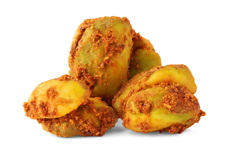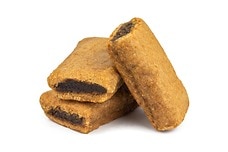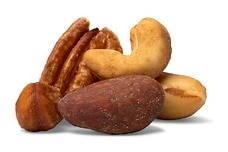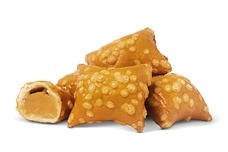Healthy Snacks for Teens
Teenage years are a dynamic and sometimes turbulent time. Between hormonal changes, puberty, high activity levels, and the challenges of school, teenagers have unique nutritional needs that require special attention. As such, teenagers require a diet with an emphasis on balanced, whole foods that will support ongoing health and development; this includes healthy snacks for teens that will help them maintain their energy throughout the day.
Healthy Nutrition During the Teenage Years Is Critical for Development
With the exception of the first year of our lives, humans grow more during their teenage years than in any other life stage (Story & Stang, 2005). This means that teenagers need a large amount of nutrients to support their ongoing development. Any nutrient deficiency could cause changes in the timing of sexual maturation, delayed growth, or other health problems.
The other reason that nutrition is so critical during the teenage years is that adolescence is a time of increasing independence. Teenagers begin testing boundaries and trying new things. You might find that your teenager becomes vegetarian or insists on eating only a certain food group. This means that the habits established during adolescence often stick around for a lifetime. Thus, it is important to establish healthy eating patterns to prevent cardiovascular disease, type 2 diabetes, obesity, or other chronic medical conditions (Story & Stang, 2005).
Components of a Healthy Snack for Teens
Snacks are a core component of most teenagers’ diets. For example, the National Health and Nutrition Survey found that 83% of teenagers ate at least one snack every day (Sebastian et al., 2010). Unfortunately, many of these snacks are not particularly healthy. According to the survey, adolescents received 23% of their daily calories and 31% of their total sugar from snacks, despite getting relatively few vitamins and minerals.
These figures emphasize the importance of healthy snacking for teenagers and the need to avoid typical unhealthy snacks. There are two major components of a healthy snack: carbohydrates and protein. Carbohydrates are your body’s primary source of fuel, giving you the energy to stay alert and active throughout the day. Complex carbohydrates such as those found in whole grain foods are particularly beneficial, because they provide a sustained source of energy. Protein is used to repair your tissues and may help you stay full throughout the day. The best healthy snacks for teens are approximately 200 calories (American Dietetics Association, 2014). Active teens or those who have just finished a workout may need a snack that is 200 to 300 calories.
Healthy Snack Ideas for Teens
Most teenagers benefit from eating a snack between breakfast and lunch and another between lunch and dinner. Even kids who have eaten a healthy breakfast may experience a dip in blood sugar levels mid-morning, leading to fatigue and difficulty concentrating (American Diabetes Association, 2015). A piece of fruit, popcorn sprinkled with a small amount of parmesan cheese, a tortilla with black beans and salsa, or a hearty shake are good ways to increase your teen’s blood sugar levels during a mid-morning slump.
For an afternoon snack, it is important to emphasize complex carbohydrates with a source of protein to promote satiety until dinner. Teenagers who attend a sports practice or other extracurricular activities after school should eat a snack before they begin to ensure they have enough energy to participate successfully. This might include whole-wheat crackers with low-fat cheese, carrots or celery sticks with hummus, a yogurt parfait, trail mix with seeds and nuts, or a pudding cup with vanilla wafers (American Dietetics Association, 2014).
Whenever possible, teenagers should steer clear of prepackaged, processed snacks. These tend to be very high in calories, fat, excess sugar, and salt (Kids Health, 2015). Ice cream, cookies, chips, soda, and candy make poor snack food choices. In fact, many of these foods tend to cause blood sugar levels to spike and then crash, leading to major food cravings shortly after eating them. For example, even a granola bar that looks healthy and is labeled “all natural” may contain large amounts of sugar or calories that make it an unhealthy snack (Kids Health, 2015).
Considerations When Choosing Snacks for Teenagers
One of the challenges when choosing healthy snacks is figuring out when to eat them. Although many schools permit water bottles in classrooms, few allow students to eat during class. While this is an understandable policy given the potential disruptiveness of teenagers snacking, it can make it a challenge for your child to squeeze in a snack during the school day.
Making healthy snacks ahead of time makes it much easier to squeeze these snacks into a busy day (Kids Health, 2015). For example, a teenager can grab a handful of trail mix at his or her locker between classes. Packing a small cooler with a yogurt cup and fresh berries or vegetables with a protein-rich dip is a good way for your child to refuel before any after school activities.
As a parent, one of the best ways to promote healthy snacking for teenagers is to get the whole family involved. The best snack is an easy snack, meaning that it is important to provide a variety of healthy snack foods that are simple to prepare. One good strategy is to keep fresh fruits and vegetables packaged in snack-sized containers in the refrigerator. When your teenager comes home, it is easy to grab some fruit and a few tablespoons of peanut butter or sliced vegetables dipped into salad dressing.
Healthy Snack Recipes
The following recipes serve up a small portion that can be stowed away in your teen’s bag for a quick and wholesome bite between the bustle of their busy teenage lives. Each recipe makes several servings of snacks between 200 and 300 calories that contain many of the essential nutrients their growing bodies need!
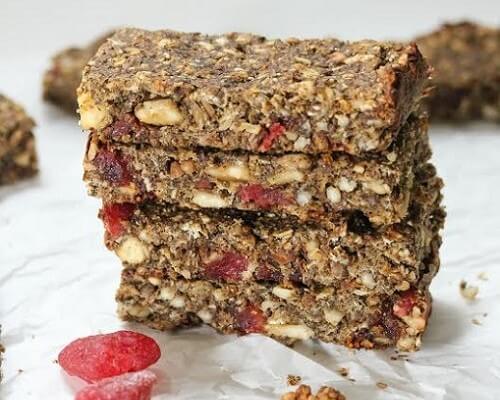
Homemade Granola Bars Recipe {gluten-free}
While many store-bought bars are laden with added sugars and saturated fats, creating your own granola bar allows you to use only the best ingredients to create a blend that is both nutritious and delicious!
Ingredients: Dried mulberries, dried strawberries, raw cashews, organic peanut butter, ripe bananas, raw sunflower seeds, hemp protein powder, gluten-free rolled oats, chia seeds, flaxseed meal.
Total Time: 40 minutes
| Yield: 12 bars
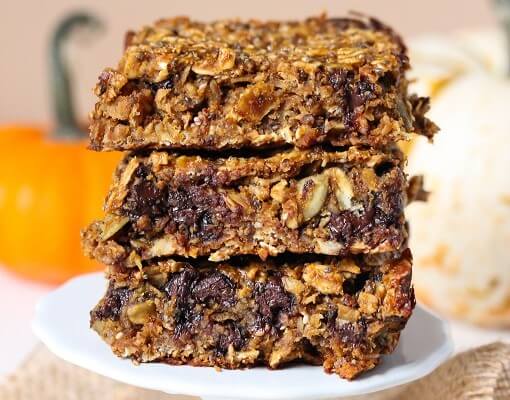
Pumpkin Granola Bars Recipe {gluten-free}
Another bar that can be easily stowed away in a bag or box, these palatable pumpkin pieces are packed with flavor. The recipe combines the piquant gourd with the rich savors of dark chocolate and sweetens the mix naturally with honey!
Ingredients: Gluten-free rolled oats, pumpkin puree, cashew butter, honey, maple syrup, dark chocolate chips, pumpkin seeds, chia seeds, pumpkin spice.
Total Time: 45 minutes
| Yield: 8 bars
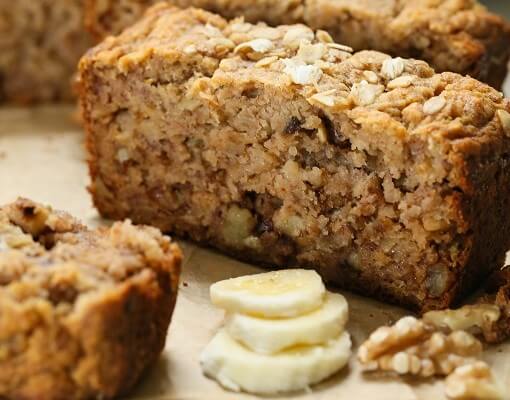
Banana Bread Recipe {gluten-free}
For a softer source of energy, protein, and fiber- this banana bread recipe offers a flavorful loaf with a light and fluffy texture. The bread is easy to make and contains walnuts for a delightful crunch that supplies a scrumptious savor.
Ingredients: Overripe bananas, eggs, coconut oil, applesauce, almond milk, honey, vanilla extract, brown rice flour, coconut flour, walnuts, gluten-free rolled oats, baking soda, baking powder.
Total Time: 1 hour
| Yield: 12 servings
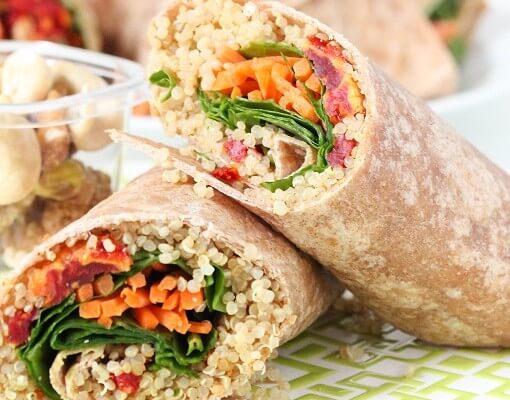
Quinoa Veggie Wrap Recipe {vegan}
Though this tasty wrap is a bit larger than typical snacks, a standard serving size is quite large to offer a dish that lends itself well to being consumed in half-servings. Simply slice the wrap diagonally and wrap one half in seran wrap for a wholesome snack that’s ready to go!
Ingredients: Tortilla wraps, quinoa, hummus, fresh spinach, sun-tomatoes, shredded carrots.
Total Time: 30 minutes
| Yield: 4 wraps
Healthy Snack Selection
Similar to our snack recipes, the following options offer a ready made and easily portable source of the nutrients and energy your teen needs to get through the day.
Healthy Eating
- Healthy Highlights
- 5 Uses for Cacao Powder
- 5 Ways to Eat Farro
- 6 Best Gluten-Free Foods
- Alcohol and the Body
- Almond Flour Recipes
- Anti-Aging Superfoods
- Beat the Afternoon Slump
- Benefits of a Plant-Based Diet
- Benefits of Baobab
- Benefits of Cashews
- Benefits of Coconut Oil for Hair
- Benefits of Coconuts
- Benefits of Dates
- Benefits of Fenugreek
- Benefits of Garcinia Cambogia
- Benefits of Goji Berries
- Benefits of Kale Chips
- Benefits of Monk Fruit Sweetener
- Benefits of Peanuts
- Benefits of Pecans
- Benefits of Pistachios
- Benefits of Pumpkin Seeds
- Benefits of Spelt Flour
- Benefits of Steel Cut Oats
- Benefits of Sunflower Seeds
- Benefits of Tiger Nuts
- Benefits of Turmeric
- Benefits of Walnuts
- Benefits of Wheatgrass
- Best Food Fads
- Cacao vs Cocoa
- Caffeine-Free Energy Foods
- Chocolate That's Good for You
- Diet vs. Exercise
- Fat Burning Foods
- Food Myths Debunked
- Foods for Bone Density
- Foods for Colon Health
- Foods for Healthy Hair
- Foods for Healthy Skin
- Foods to Help Sleep
- Foods to Reduce Stress
- Green Tea Benefits
- Healthy Baking Flours
- Heart Healthy Habits
- High Protein Health Risks
- How to Boost Your Metabolism
- How to Lose Weight While Aging
- How to Throw a Vegan BBQ
- Kaniwa vs Quinoa
- Little Health Foods
- Low-Carb: Fad or Friend?
- Making Healthier Desserts
- Mediterranean Diet Meal Plan
- Natural Beauty Products
- Nuts for Weight Loss
- Preparing Vegan Meals
- Preventing Muscle Degeneration
- Rare Superfoods
- Reduce Sugar Intake
- Save Time By Going Vegan
- Smarter Snack Swaps
- Smoothie Ingredients
- Soy Protein vs Whey Protein
- Starting a Plant-Based Diet
- Steel Cut vs Rolled Oats
- Sugar Substitutes
- Vegan Proteins
- Vegan Substitutions for Fall Recipes
- Why Go Vegan
- Healthy Meals
- Healthy Recipes
- Sports Nutrition
- Nutrition and Special Diets
- 21 Day Fix
- 5 Popular Diet Similarities
- Alkaline Diet
- Anti-Inflammatory Diet
- Calorie Counting
- Carb Cycling Diet
- Celiac Disease
- Cholesterol
- Clean Eating
- Crohn's Disease
- DASH Diet
- Detox Diet
- Diabetes
- Diabetes Diet
- Diet Pill Dangers
- Fat Burning Foods
- Gluten-free Diet
- Glycemic Index
- Heart Health
- High Blood Pressure Diet
- High Fiber Foods
- How to Eat Healthy
- How to Lower Blood Pressure
- Hypertension
- IBS Diet
- Ketogenic Diet
- Liquid Diet
- Low GI Foods
- Low-Carb Diet and Foods
- Low-Fat High-Carb Diet
- Mediterranean Diet
- Mediterranean Diet Foods
- Military Diet
- Nutrition Labels Explained
- Paleo Diet
- Raw Food Diet
- Superfoods
- Sustainable Weight Loss
- Thrive Diet
- Vegan Diet
- Vegetarian Diet
- Weight Loss Shakes
- Whole30
- Vitamins, Minerals & Nutrients


